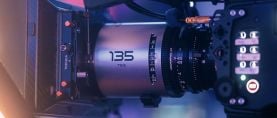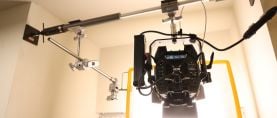
Sony CineAlta Venice Updates
A new version of the camera with extension system to be used by director James Cameron on the upcoming Avatar sequels is announced.
A new version of the camera with extension system to be used by director James Cameron on the upcoming Avatar sequels is announced.
At the recent Cine Gear Expo in Los Angeles, Sony announced during an invite-only press conference that their full-frame, anamorphic-capable CineAlta Venice camera — announced last September at IBC — will not only be used on the sequels to James Cameron’s Avatar franchise, but that it will also have detachable, tetherable head unit.
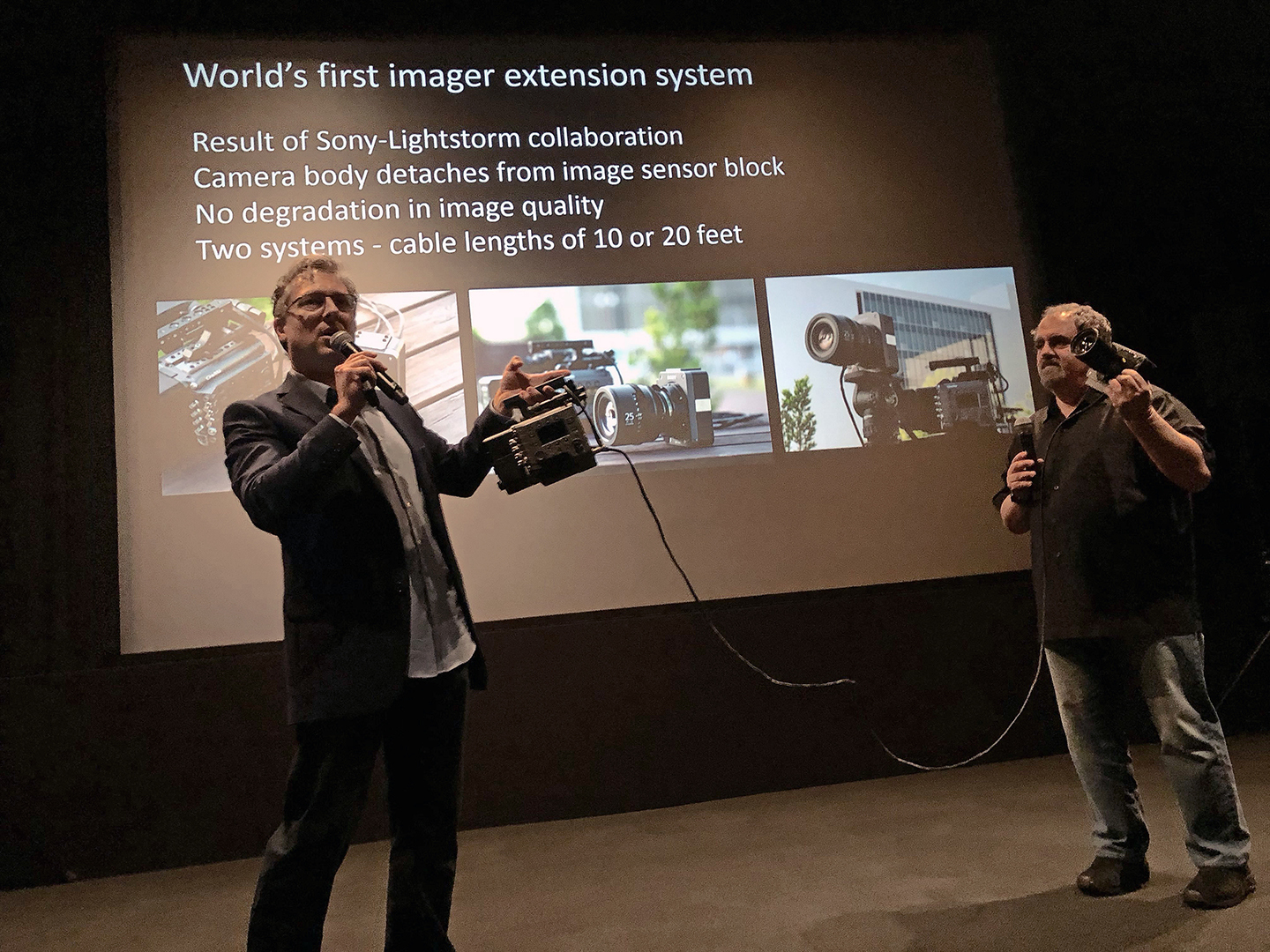
Produced through Cameron’s Lightstorm Entertainment, the live-action portions of the Avatar sequels are being photographed by Russell Carpenter, ASC.
Originally scheduled for an update in August, Sony also detailed a Version 2 firmware, which they bumped up to a release in early July. In addition to the previously available base ISO of 500, dual ISO will be added at 2500 ISO. Procuring advanced lowlight dynamic range of +6 stops to -9 stops at 18% middle gray, the increase achieves maximum shadow detail for night or dark scenes.

Additionally, the Select FPS modes will provide individual frame rate increments ranging from 1-60 fps. Several new frame rates, resolutions and aspect ratios will be unlocked, including 25p in 6K full-frame, 25p in 4K 4:3 anamorphic, 17:9 and 1.85:1 in 6K, and 6:5 anamorphic in 4K.
Without the need to swap out or update to a new sensor, high frame rates at up to 60 fps in 6K, 90 fps in 4K, and 120 fps in 2K are promised as an optional upgrade through the Version 3 firmware, which is slated for the spring of 2019. Version 3 will also bring 16:9 at 5.7K resolution and 2.39:1 in 6K.

Celebrating the Sony Venice community, customizable 3D LUTs will be able to be uploaded for users to share and apply to their own systems or shoots. Remote control of key functions like camera settings, FPS, shutter, exposure index, rec start/stop, optical ND filtration, and iris when using Sony E-mount lenses will be an option through wired LAN.
With 18mm flange depth, the camera's lever lock type E-mount will also provide compatibility with Sony E-mount lenses in addition to the current PL for further lensing options in both full frame and Super 35, including a number of available adaptors for third-party solutions.
Apple ProRes 422 HQ, ProRes 422 and ProRes 422 Proxy recording is also going to be added for HD capture at most standard usage frame rates. Surround View and 4.0x magnification will be implemented as monitoring features.
Find a full firmware roadmap for the Sony Venice here.
With prototype model in hand, the Sony Venice Extension System was announced concurrently with Cameron’s plans to employ the camera on the upcoming Avatar films. The body will be able to be detached from the image sensor block without any degradation to image quality at up to 20'. The model shown had 10' cord.
Sony says the production is also using multiple Sony Alpha mirrorless interchangeable lens cameras in addition to the PXW-Z450 and PXW-320 camcorders and the miniature 40.5mm x 59.0mm RX0 camera with 1.0" Exmor RS CMOS sensor.
“Here we were embarking on four Avatar sequels and we knew that we need to do something that brings people out of their homes and into the theaters,” explained Jon Landau, longtime collaborator with Cameron and Producer at the director’s Lightstorm Entertainment, as he joined Peter Crithary, Marketing Manager for Motion Picture Cameras, Sony Electronics, in unveiling the new form factor for the camera.
“Jim, who is very thorough in everything he does, really looked at all of the different options out there. Then we looked at the Sony Venice camera and were really were blown away by the potential that it had in how it could convert to 3D. Sony was open to dedicating their team of incredible engineers to work on something that would make it adaptable for our specific needs on the production. What struck us was the quality of the camera, but also the openness to work with filmmakers to deliver a product that is usable and user-friendly for a filmmaker.”
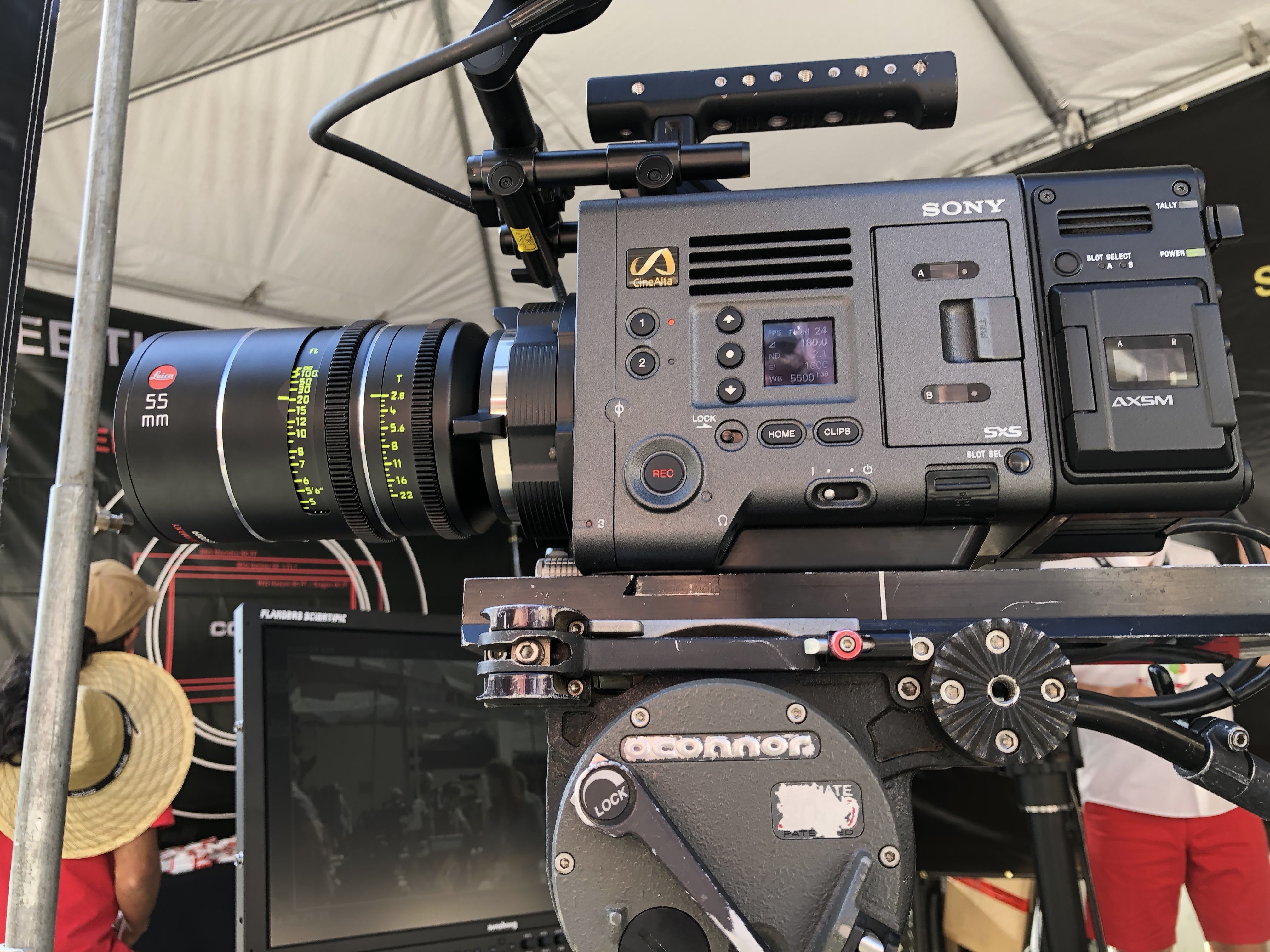
“We were astounded by it,” Landau added. “The levels of black. We were amazed by the whites, how you could still maintain without peaking, and the skin tones. All these things are so important for the presentation. Again, nobody has a more critical eye than Jim, and when he saw the results of what the Venice camera could do, there was no question in his mind.”
“The Avatar sequels will be among the first feature films to use the new Venice Extension System,” said Crithary in the press release, “but it also has tremendous potential for wider use with handheld stabilizers, drones, gimbals and remote mounting in confined places.”
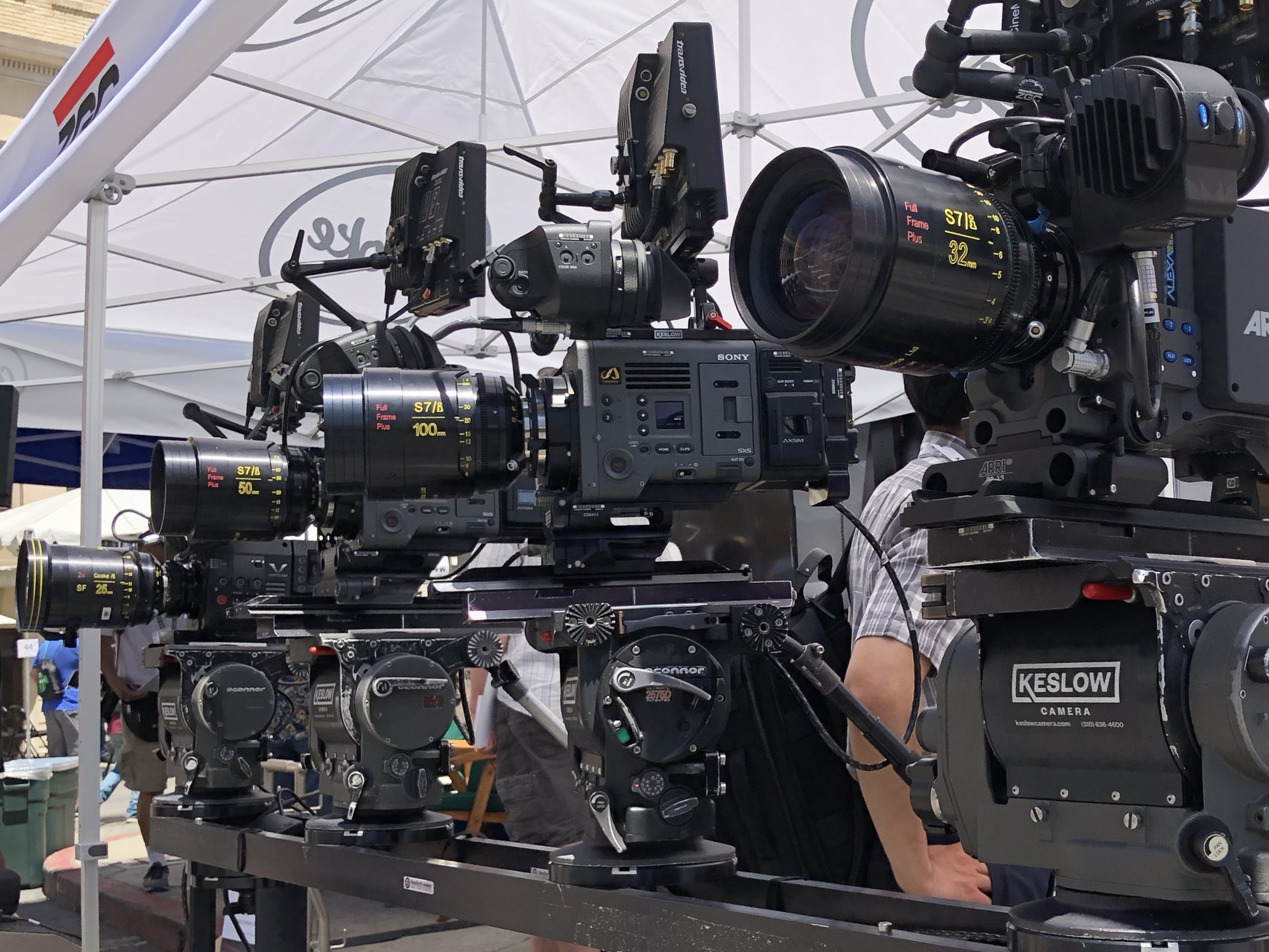
Carpenter, who worked previously with Cameron on the blockbusters True Lies and Titanic (for which he earned an Academy Award), is currently working on the preliminary photography for Avatar 2, which is slated for release on December 18, 2020. The team says they will be using a variety of stereoscopic rigging, which makes the lighter Sony Venice Extension head, roughly 3 lbs, an ideal choice for the productions.
“The Venice camera delivers the most astonishing image I’ve ever seen,” explained Cameron via press release. “The blacks are rich, deep and velvety, the highlights and source lights are amazingly bright. For the first time, we truly appreciate what the term High Dynamic Range means.”
Sony mentioned during the press conference that their technical partnership with Teradek has resulted in a wireless, 16-bit Bolt system designed specifically for the CineAlta Venice. With internal signal path and transmission, this eliminates any need for external HDMI or SDI output.
On September 6, 2017, Sony introduced the Venice camera to ASC members on the Sony Pictures Studio lot in Culver City with the short film The Dig, lensed by Claudio Miranda, ASC, and directed by Joseph Kosinski:
Follow Sony Professional Solutions Americas on Facebook, Instagram and Twitter
Stay up to date with American Cinematographer on Facebook, Instagram and Twitter.


